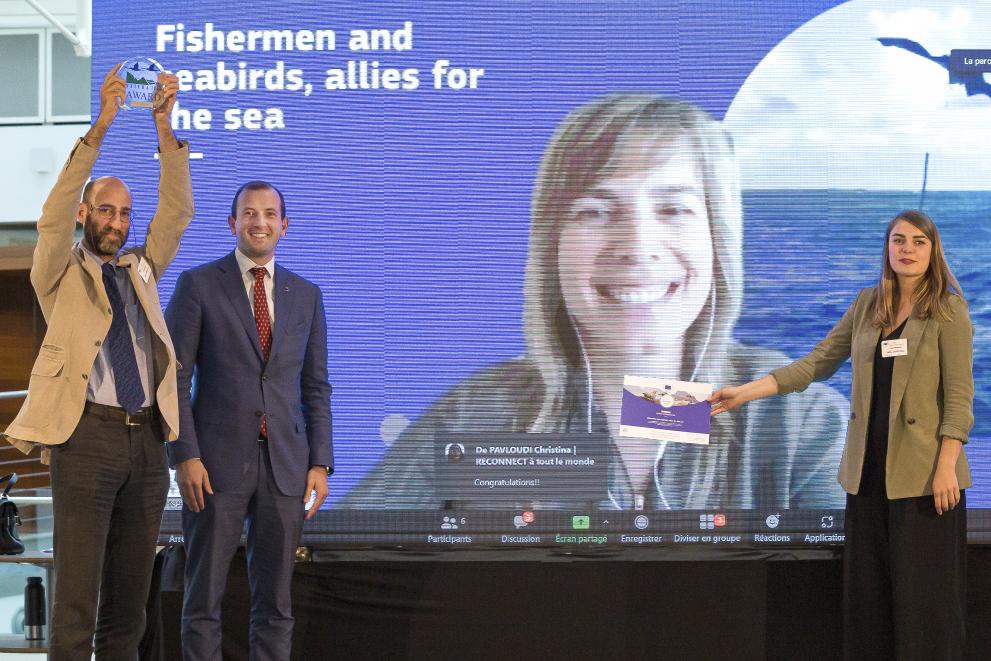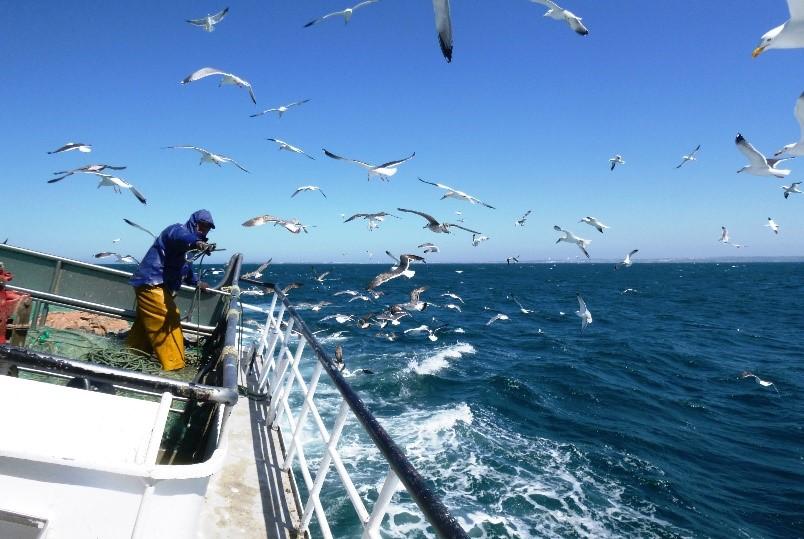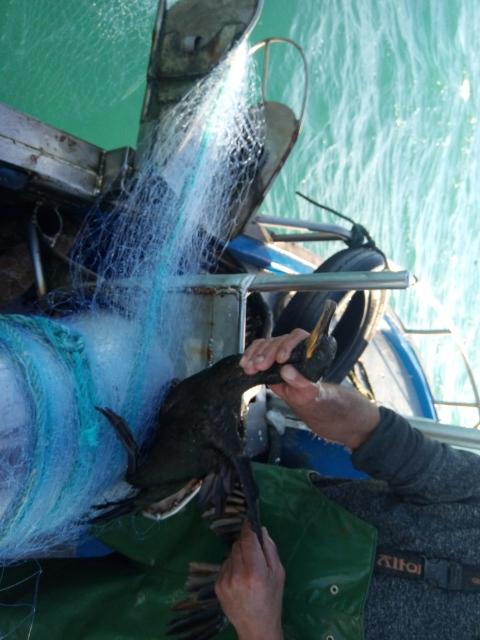
Commissioner Sinkevičius and Luna Milatović presented the Marine conservation award 2022 to Ariel Brunner (Birdlife Europe representing SPEA) and, on screen, Ana Almeida (SPEA), for their application “Fishermen and seabirds, allies for the sea”.
About the project
- Main applicant
SPEA - Sociedade Portuguesa para o Estudo das Aves
- Category
Marine conservation
- Countries involved
Portugal
- Main N2000 site
Ilhas Berlengas (PTZPE0009)
Overview
Seabirds usually feed in areas that are rich in fish and so they frequently encounter commercial fishing boats and, in European seas, 200 000 birds are accidently caught in commercial fishing gear each year. Being incidentally caught in the boats’ nets or hooks (“by-catch”) is a major threat to seabirds, and many end up drowning. The problem has also negative impacts on fishing activity; it is time-consuming and damages fishing gear. In European waters alone, 200 000 birds are caught like this every year.
The Ilhas Berlengas in Portugal is a unique Natura 2000 site where seabirds - including Cory’s shearwaters, Madeiran-storm petrels and gulls - raise their young. One of these species is the critically endangered Balearic shearwater which is at risk of being accidently caught since fisheries is one of the main economic activities in the area.
Funded by the EU LIFE programme and the European Maritime and Fisheries Fund, and working closely with the fishing community, the nature conservation NGO SPEA (BirdLife’s partner in Portugal) identified the most problematic fishing gear and the seabird species most susceptible to accidental catches. On this basis, they developed and trialled different mitigation measures. One of these measures, the “scary bird decoy”, proved particularly effective. Attached to the vessel, this device is kept moving by the wind and movement of the boat, simulating the presence of a predator.
After being tested for long hours at sea, the results were unanimous: the scary bird device kept seabirds away, reducing the likelihood that they would be caught. Happily, it was found to be particularly effective for the Balearic shearwater. Fishermen helped fine-tune the device, which they found to have many advantages. Cheap and easy to produce, easy to assemble and repair, it did not interfere with fishing dynamics, saved time otherwise lost removing birds from fishing gear, and reduced damage to nets. The scary bird is now used by all fishermen involved in the trials and a new cooperation project is underway to extend its use to more fishing vessels.
Local event
The application "Fishermen and Seabirds, Allies for the Sea" was honoured at the winner’s local event in Peniche (Portugal), the closest on-land point to the Natura 2000 site “Ilhas Berlengas
(PTZPE0009)”, where the award-winning activities were carried out. The event, held on 30 June 2023, celebrated winning the Marine conservation category of the 6th edition of the Natura 2000 Award, in 2022.
The event began with a warm welcome from the Secretary of State for the Sea. The lead applicant, the Portuguese Society for the Study of Birds (SPEA), then highlighted the successful collaboration with partner organisation MedAves Pesca, jointly demonstrating how the accidental capture of seabirds by commercial fishing practices can be reduced. A significant moment during the event was the symbolic handover of “scary bird” devices to the fishing community – these devices are very successful in preventing birds getting entangled in fishing nets and thereby promoting sustainable fishing practices.
The local event concluded with a round-table discussion on the National Action Plan for Incidental Catches of Sensitive Species, at which representatives from the Portuguese Ministry for Agriculture and the Sea, the Portuguese Institute of Sea and Atmosphere, the European Commission, and organisations from the environmental sector addressed challenges and key components of the plan together with fishermen representatives. The European Commission was represented at the event by Humberto Delgado Rosa, Director of the Biodiversity Directorate of DG Environment.
PT: The Secretary of State for Fisheries closed the event with a message of commitment to the National Plan of Action for BycatchPT: The Secretary of State for Fisheries closed the event with a message of commitment to the National Plan of Action for Bycatch© Catarina Faria | SPEA 
Allies for the sea - add photo 4Elisabete Silva - SPEAElisabete Silva - SPEA Allies for the sea - add photo 1Iván Gutiérrez - SPEAIván Gutiérrez - SPEA Allies for the sea - main photoElisabete Silva - SPEAElisabete Silva - SPEA Allies for the sea - add photo 2Elisabete Silva - SPEAElisabete Silva - SPEA 
Allies for the sea - add photo 3SPEASPEA Allies for the sea - add photo 5Elisabete Silva - SPEAElisabete Silva - SPEA 
Allies for the sea - videoSPEASPEA
